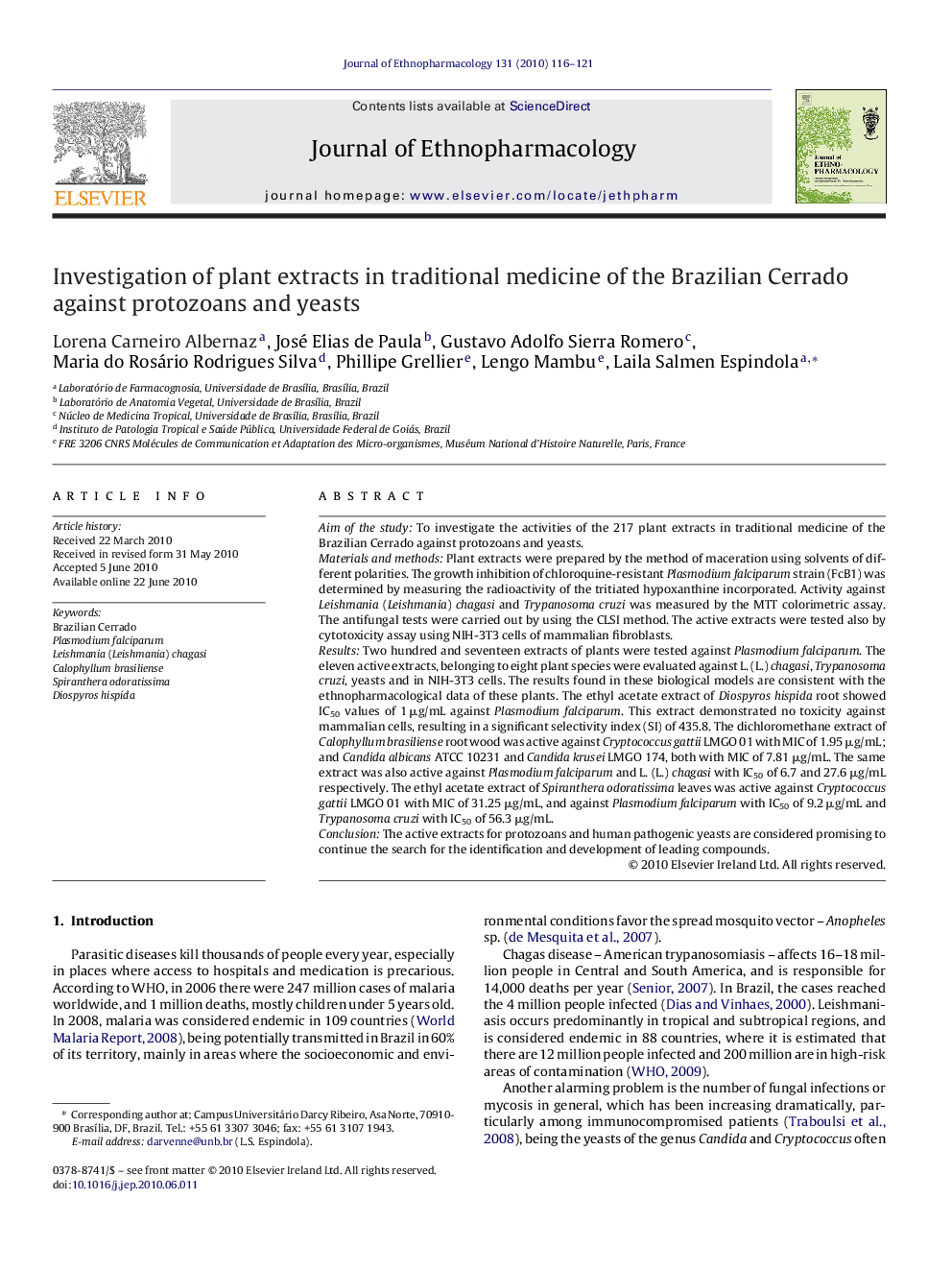| Article ID | Journal | Published Year | Pages | File Type |
|---|---|---|---|---|
| 2546217 | Journal of Ethnopharmacology | 2010 | 6 Pages |
Aim of the studyTo investigate the activities of the 217 plant extracts in traditional medicine of the Brazilian Cerrado against protozoans and yeasts.Materials and methodsPlant extracts were prepared by the method of maceration using solvents of different polarities. The growth inhibition of chloroquine-resistant Plasmodium falciparum strain (FcB1) was determined by measuring the radioactivity of the tritiated hypoxanthine incorporated. Activity against Leishmania (Leishmania) chagasi and Trypanosoma cruzi was measured by the MTT colorimetric assay. The antifungal tests were carried out by using the CLSI method. The active extracts were tested also by cytotoxicity assay using NIH-3T3 cells of mammalian fibroblasts.ResultsTwo hundred and seventeen extracts of plants were tested against Plasmodium falciparum. The eleven active extracts, belonging to eight plant species were evaluated against L. (L.) chagasi, Trypanosoma cruzi, yeasts and in NIH-3T3 cells. The results found in these biological models are consistent with the ethnopharmacological data of these plants. The ethyl acetate extract of Diospyros hispida root showed IC50 values of 1 μg/mL against Plasmodium falciparum. This extract demonstrated no toxicity against mammalian cells, resulting in a significant selectivity index (SI) of 435.8. The dichloromethane extract of Calophyllum brasiliense root wood was active against Cryptococcus gattii LMGO 01 with MIC of 1.95 μg/mL; and Candida albicans ATCC 10231 and Candida krusei LMGO 174, both with MIC of 7.81 μg/mL. The same extract was also active against Plasmodium falciparum and L. (L.) chagasi with IC50 of 6.7 and 27.6 μg/mL respectively. The ethyl acetate extract of Spiranthera odoratissima leaves was active against Cryptococcus gattii LMGO 01 with MIC of 31.25 μg/mL, and against Plasmodium falciparum with IC50 of 9.2 μg/mL and Trypanosoma cruzi with IC50 of 56.3 μg/mL.ConclusionThe active extracts for protozoans and human pathogenic yeasts are considered promising to continue the search for the identification and development of leading compounds.
Graphical abstractSome 217 extracts from 27 plants growing in the Brazilian Cerrado were assessed for protozoans and yeasts. The results obtained are consistent with the ethnopharmacological data.Figure optionsDownload full-size imageDownload as PowerPoint slide
